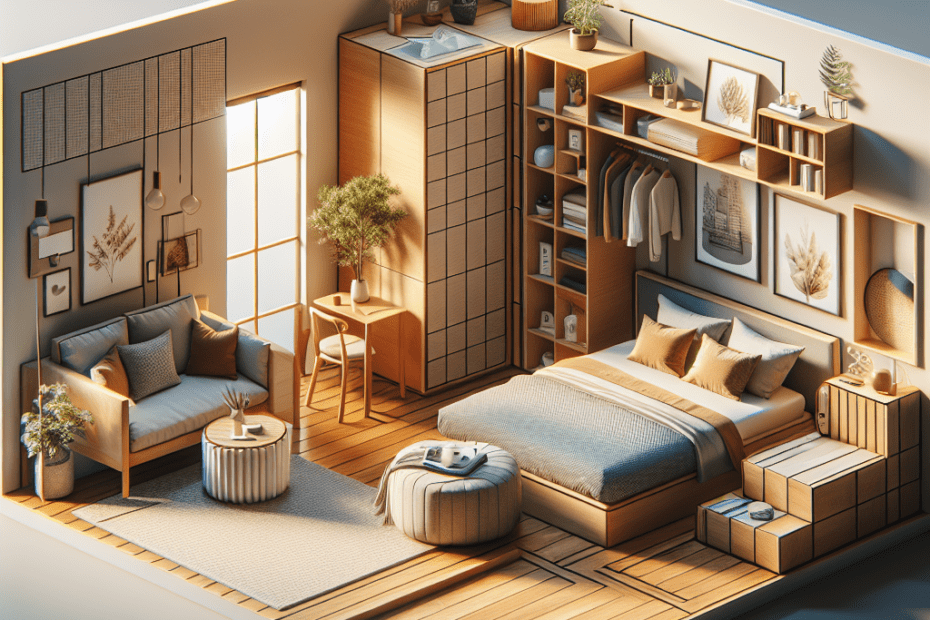“`html
Introduction
Many people find themselves challenged by the constraints of a small bedroom. With limited space, they often struggle to create a comfy and functional area that meets their needs. “Small Bedroom Layouts” is a buzzing keyword for those looking to maximize their living areas without sacrificing style or comfort. Recent statistics reveal that the average bedroom size in newly constructed homes in the U.S. shrank to 219 square feet in the last decade (source: National Association of Home Builders). To help navigate through space limitations, some innovative layout ideas can make even the tiniest bedroom feel more spacious and inviting.
Understanding the Space
Before choosing a layout, individuals must get acquainted with their bedroom’s dimensions. It’s important to measure every corner precisely to understand the available space fully. Selecting furniture accordingly helps in optimizing the area. Small bedroom layouts offer several opportunities to creatively arrange pieces without cluttering the room.
Essential Furniture and Their Arrangement
Not all furniture needs to make its way into a compact room. Those seeking the best small bedroom layouts often prioritize furniture that provides dual purposes. Loft beds, for instance, can create additional space for a desk or a cozy reading nook underneath.
The choice of bed matters significantly. A twin or a full-sized bed placed against one wall or in a corner can open up more floor space. However, for those who prefer larger beds, positioning the bed centrally but close to one wall allows for additional mobility and circulation.
| Furniture | Recommended Positioning | Benefits |
|---|---|---|
| Bed | Against the wall or in the corner | More floor space for other activities |
| Bedside Table | Next to the bed | Convenient access to essentials |
| Wardrobe | Opposite the bed or built-in | Less visual clutter, maximized storage |
| Desk | Under loft bed or near window | Efficient use as workspace, natural light |
| Floating Shelves | Above bed or desk | Utilizes vertical space, avoids clutter |
Utilizing Vertical Space
Vertical space is often neglected in bedroom designs but is crucial in small bedroom layouts. By incorporating wall-mounted shelves or floating shelves, one can easily store books, decor items, or personal belongings without taking up valuable floor area.
Additionally, tall wardrobes that reach the ceiling can hold more items than shorter alternatives, which leaves more room elsewhere for other essentials.
Incorporating Mirrors
Mirrors are not only functional but can also create the illusion of more space. Placing a large mirror opposite a window or behind a door can reflect natural light, making a small bedroom feel larger and brighter.
Effective Lighting
A well-lit room appears bigger and more inviting. Using layered lighting — ambient, task, and accent — ensures ample illumination. Opting for space-saving lighting fixtures like wall-mounted lamps or pendant lights means freeing up precious floor and bedside table space.
Color Schemes and Aesthetics
Color choice can drastically influence the perception of space. Light and neutral tones on walls, ceilings, and floors expand the visual limits of a bedroom. When paired with pops of color from decor, pillows, or linens, it balances coziness with openness.
Key Takeaways
- Understanding the exact dimensions of the room aids in selecting suitable furniture.
- Prioritizing dual-purpose and space-efficient furniture can save room.
- Utilizing vertical space with shelves and tall storage solutions can declutter your floors.
- Mirrors and well-placed lighting enhance perception of space and brightness.
- Opting for light and neutral color schemes helps in creating an airy feel.
FAQ
- What furniture works best in a small bedroom layout?
- How can mirrors help in small bedrooms?
- Why is vertical space important in small bedrooms?
- What colors are best for small bedroom layouts?
- What type of lighting should be used in a small bedroom?
Furniture that serves multiple functions, such as loft beds or convertible desks, is ideal for maximizing space.
Mirrors reflect light, making the room appear larger and brighter, thus enhancing the overall spatial perception.
Utilizing vertical space helps to store items without occupying floor space, reducing clutter and optimizing storage.
Light and neutral colors tend to make small spaces feel larger and airy. Adding small splashes of vibrant colors can add character.
Layered lighting, such as ambient, task, and accent lighting, ensures a well-lit bedroom while saving space with wall or ceiling fixtures.
“`
